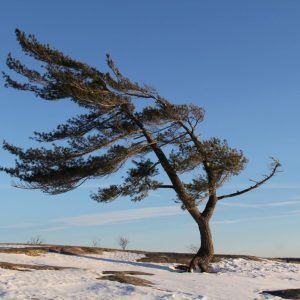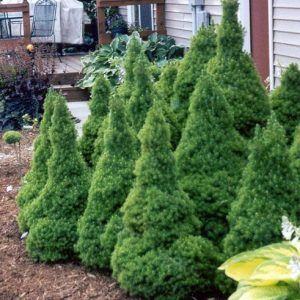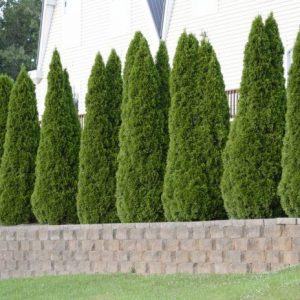For our eighth entry in a Chipps Tree Care blog series on threats to Alberta trees, we focus on a critter that can cause a great deal of damage to Edmonton’s lush urban forest if not properly dealt with.
The White Satin Moth or Leucoma salicis feeds on Alberta’s poplar, cottonwood, aspen and willow tree species often to the detriment of entire tree populations. According to the book Garden Bugs of Alberta by Ken Fry, Doug Macaulay and Don Williamson, satin moths came into North America from Europe in the 1920s and were first seen in British Columbia. Since then their range has expanded as much as 700 km inland and they were first spotted in Edmonton in 1994. Mature satin moth caterpillars grow to be 38 mm long and they can be recognized by their black coloration and central row of white or light yellow markings.

Adults have pure white wings with a beautiful satin-like lustre but don’t let the dazzling exterior fool you. The big problem with satin moths is that the adult females lay hundreds of eggs on host plants each year, and once the larvae show up, they begin to eat and eat, consume and consume and consume. This means that Alberta faces serious defoliation issues during the tail end of each summer all the way into the following spring if outbreaks are not curtailed. The caterpillars feed principally on the leaves of poplar and willow trees and less commonly on oak and successive heavy attacks over as few as three years are likely to result in the dieback of branches, or even whole trees.
There are a couple of cultural practices a homeowner can use to help control satin moth on a tree, but only a certified arborist can tell for sure precisely which species you are dealing with and how to go about removing the pests. If only small groups of plants are affected, the book’s authors recommend hand-picking the larvae off of individual plants and disposing of them, which isn’t always an easy thing to do, and is always best left to the pros. The greenish egg masses concentrated on the lower areas of the tree and if identified early by an arborist, can be scraped off in July with the proper tools and destroyed before they hatch.
Chipps Tree Care specialists are also experts at applying sticky bands that can be used to intercept much of the upward movement of young caterpillars that overwinter in bark crevices on the lower trunk area. Such a sticky band trap should be established by the end of April and monitored throughout the month of May to ensure the sticky surfaces do not become saturated with emerging caterpillars.
The best thing you can do at home is to work on measures that prevent infestation in the first place. In order to keep your trees and plants as stress-free as possible, it’s best to keep consistent watering and feeding schedules, ensuring that the root zone is weed-free at all times.
To help keep your trees, lawn, and yard healthy this winder, it’s important to schedule an on-site consultation with one of our ISA-certified arborists, especially if you suspect a problem. And if you’re ever in doubt about how to care for your poplar, willow, and oak trees against the White Satin Moth and other predators, be sure to check early and often with the Chipps Tree Care blog. We publish several monthly articles to help keep you informed about the latest trends in tree care in Edmonton, Alberta.























